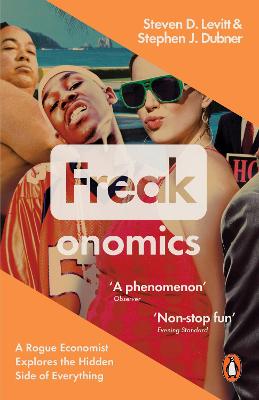Reviewed by gmcgregor on
Levitt and Dubner put all their faith into a field usually called behavioral economics. It posits that humans are rational actors, and when they appear not to be, it's because the incentives that drive their choices aren't obvious. How much you go along with their theories depends on how much stock you put into behavioral economics, and for me, it's honestly a mixed bag. The most interesting portion of the book, in my eyes, was the chapter on abortion and crime. It's more of a purely statistical dive, and the underlying assumption that he uses, that women are good judges of when they shouldn't bring children into the world because they won't be able to devote sufficient resources (money, of course, but time and energy too) to their raising, is one that makes sense to me. The children that might otherwise have been brought into the kind of poor home environments that correlate with (but don't necessarily cause) criminality simply weren't born and therefore can't be in the world, committing crimes. It's a bold hypothesis, and unsurprisingly turned out to be one of the most controversial. Since I had the revised/expanded edition of the book, they actually included an appendix chapter doing a deep dive into their statistical analysis. I've got some very basic grounding in statistics, but it was beyond my ability to actually comprehend, so I just have to trust that they did their homework correctly.
There are some other interesting tidbits, including one about charter/magnet schools and their effect on student achievement, but I found myself often skeptical of their breezy assurance of their own correctness and faith in their data. After the massive statistical analysis failure of the 2016 election, it's more obvious than ever that data isn't always all-knowing...it needs careful parsing and tweaking to accurately reflect reality.
Reading updates
- Started reading
- 1 December, 2016: Finished reading
- 1 December, 2016: Reviewed
